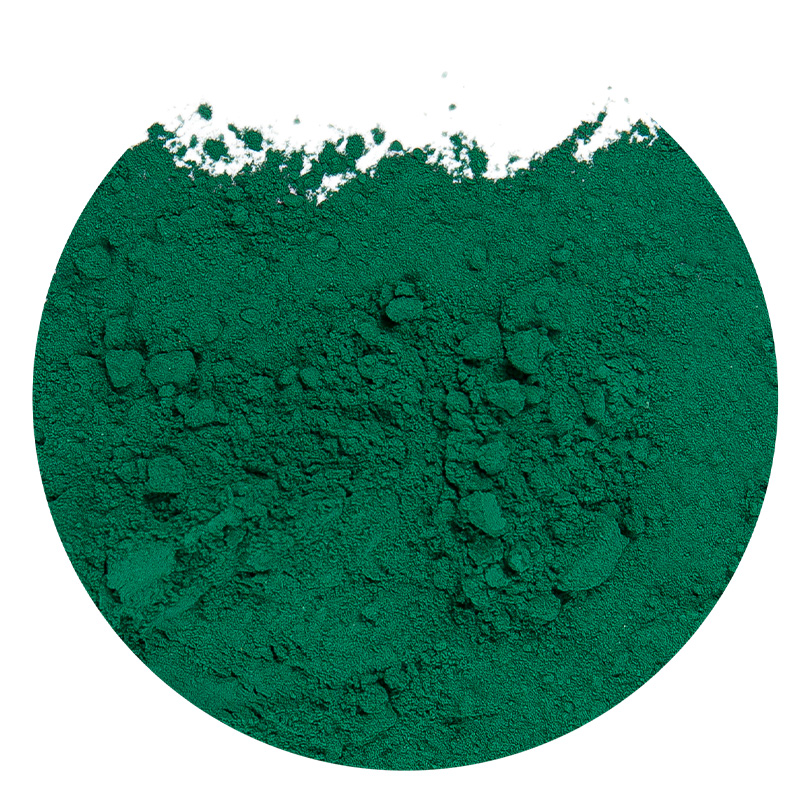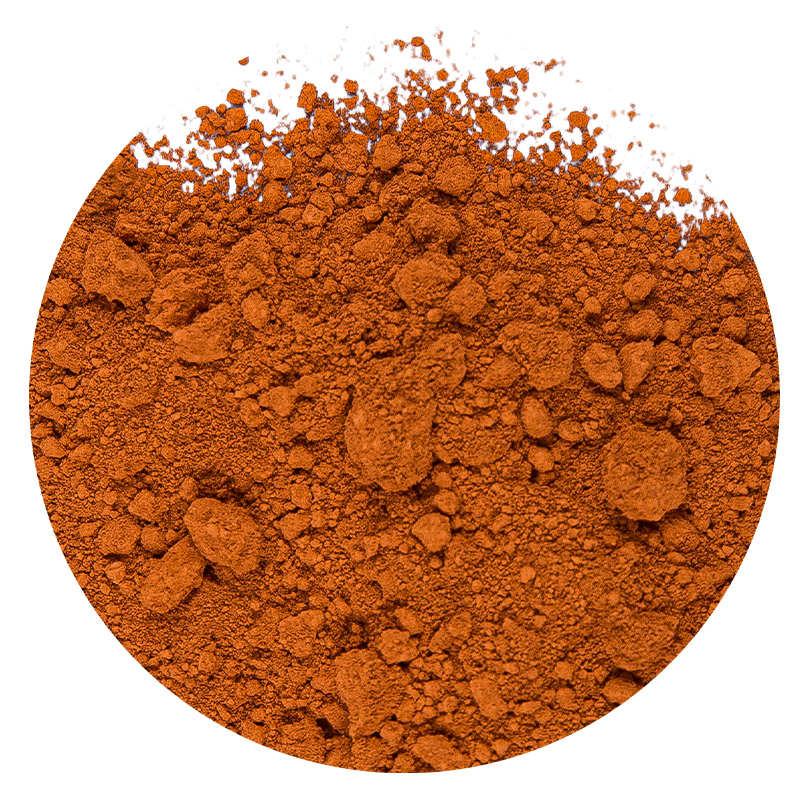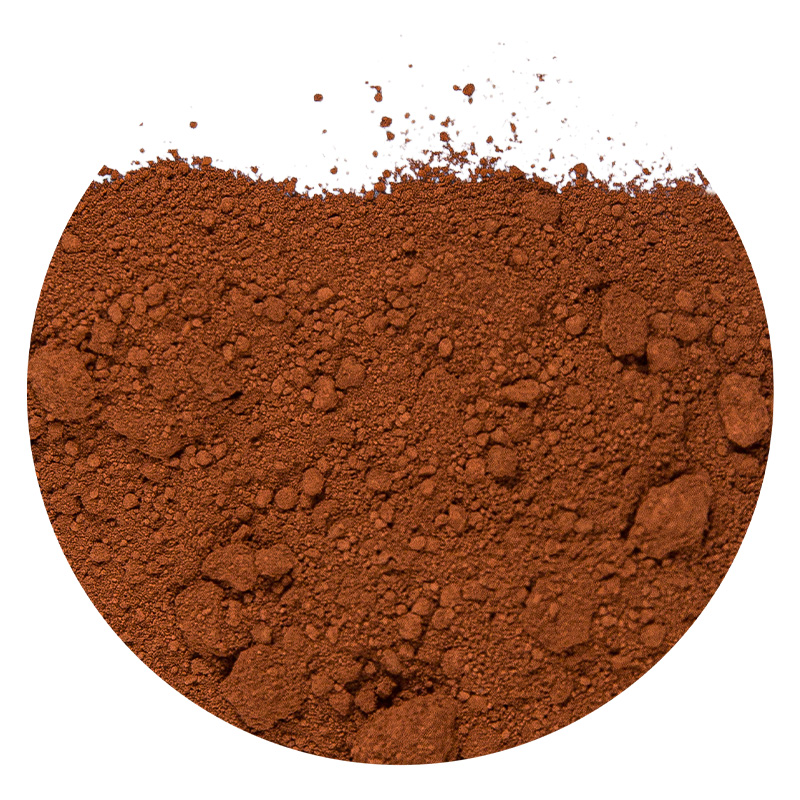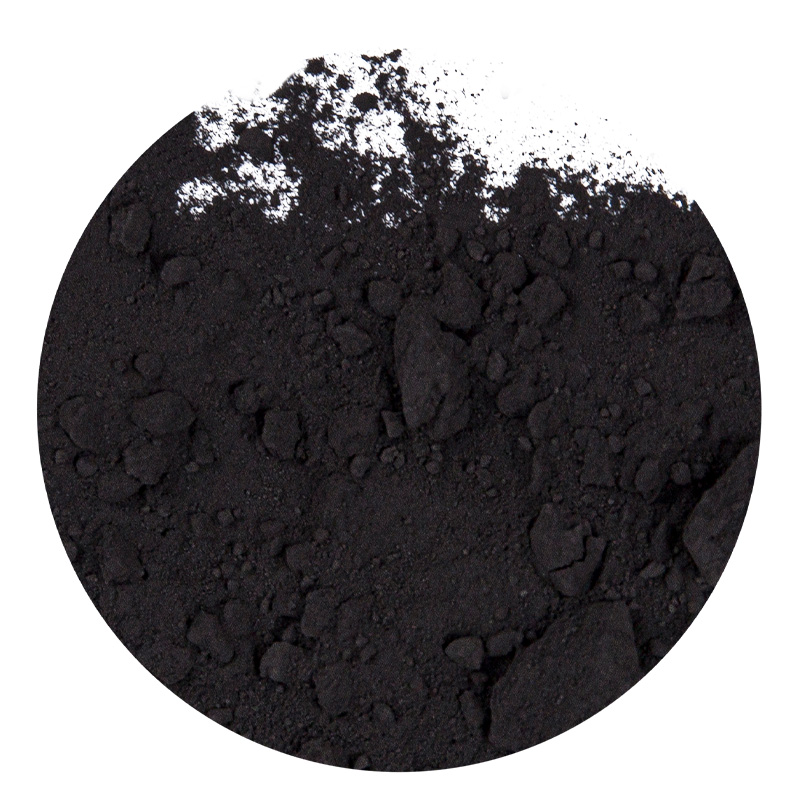Performance Comparison of Iron Oxide Powders with Different Crystalline Forms
- 1 Fundamental Crystal Structures of Iron Oxide Powders
- 2 Color Performance and Tinting Strength Variations
- 3 Weather Resistance and Durability Performance
- 4 Comparative Analysis of Key Performance Parameters
- 5 Surface Chemistry and Dispersion Characteristics
- 6 Magnetic Properties and Technical Applications
- 7 Thermal Behavior and High-Temperature Applications
- 8 FAQ
- 8.1 What are the main differences between natural and synthetic iron oxide powders?
- 8.2 How does particle size affect the performance of iron oxide powders?
- 8.3 Which iron oxide crystal form offers the best UV resistance for outdoor applications?
- 8.4 Can different iron oxide crystal forms be combined in formulations?
- 8.5 What safety considerations apply when handling iron oxide powders?
Iron oxide powder represents one of the most versatile and widely used inorganic pigments across numerous industries, from construction materials and coatings to plastics and specialized technical applications. However, the performance characteristics of these powders vary significantly based on their crystalline structure, which directly influences properties like color development, weather resistance, thermal stability, and reactivity. This comprehensive guide examines how different crystal forms of iron oxide powder—including hematite, magnetite, maghemite, and goethite—perform across various applications, providing valuable insights for formulators, engineers, and technical specialists seeking to optimize material selection based on specific performance requirements.
Fundamental Crystal Structures of Iron Oxide Powders
The performance characteristics of iron oxide powder are fundamentally determined by their crystalline structure, which governs atomic arrangement, surface properties, and interaction with other materials. Different crystal forms develop under specific synthesis conditions, resulting in distinct morphological features that significantly impact practical application performance. Understanding these fundamental structural differences provides the foundation for selecting appropriate iron oxide variants for specific technical requirements and formulation challenges across diverse industrial applications.
- Hematite (α-Fe₂O₃): Rhombohedral crystal system with hexagonal close-packed oxygen atoms creating high structural stability and chemical inertness.
- Magnetite (Fe₃O₄): Inverse spinel structure with mixed valence states enabling unique magnetic and electrical properties.
- Maghemite (γ-Fe₂O₃): Defect spinel structure with cation vacancies creating distinctive magnetic characteristics while maintaining chemical similarity to hematite.
- Goethite (α-FeOOH): Orthorhombic structure containing hydroxyl groups that influence thermal behavior and surface chemistry.
- Lepidocrocite (γ-FeOOH): Layered structure with different packing sequence than goethite, affecting transformation behavior and pigment properties.
Color Performance and Tinting Strength Variations
The color characteristics of iron oxide powder vary dramatically across different crystal structures due to variations in light absorption, scattering properties, and particle morphology. These color differences stem from electronic transitions between iron ions, crystal field effects, and particle size distributions inherent to each crystalline form. Understanding these color performance variations enables precise selection of iron oxide pigments to achieve specific hue requirements, color consistency, and tinting strength across different application media and manufacturing processes.
- Hematite Color Properties: Produces red shades ranging from light red to deep maroon depending on particle size and distribution.
- Magnetite Color Characteristics: Creates black colors with blue or brown undertones based on manufacturing methods and purity levels.
- Goethite Color Performance: Yields yellow shades that can range from lemon yellow to orange-yellow depending on crystal morphology.
- Maghemite Color Attributes: Typically produces reddish-brown shades with variations based on particle size and surface treatment.
- Mixed Phase Materials: Combinations of different crystal forms create intermediate colors like browns, tans, and umbers with unique color properties.
Weather Resistance and Durability Performance
The weather resistance of iron oxide powder represents a critical performance parameter for exterior applications where prolonged exposure to environmental elements can cause color fading, chalking, or degradation. Different crystal structures exhibit varying resistance to UV radiation, moisture, atmospheric pollutants, and temperature fluctuations based on their chemical stability, surface characteristics, and interaction with binder systems. Understanding these durability differences enables appropriate material selection for applications requiring long-term color stability and protection from environmental degradation.
- UV Resistance Mechanisms: Crystal structures with tight atomic packing and minimal defects generally provide superior resistance to photochemical degradation.
- Chemical Inertness: Resistance to acid, alkali, and solvent exposure varies significantly between crystal forms based on surface chemistry and solubility.
- Thermal Stability: Different crystal structures maintain color stability across varying temperature ranges, with transformation points influencing maximum service temperatures.
- Moisture Resistance: Hydrophobic surface characteristics and low water solubility contribute to weather resistance in humid environments.
- Atmospheric Corrosion Protection: Some crystal forms provide better protection against sulfur compounds, salt spray, and industrial pollutants.
Comparative Analysis of Key Performance Parameters
Selecting the optimal iron oxide powder for specific applications requires understanding how different crystal forms perform across multiple technical parameters. Each crystalline structure offers distinct advantages and limitations in areas like thermal stability, chemical resistance, color strength, and processing characteristics. The table below provides a comprehensive comparison of the most common iron oxide crystal forms to inform material selection decisions based on specific application requirements and performance priorities:
| Crystal Form | Color Range | Thermal Stability | Weather Resistance | Tinting Strength | Primary Applications |
| Hematite (α-Fe₂O₃) | Reds | Excellent (up to 1200°C) | Excellent | High | Construction, coatings, plastics |
| Magnetite (Fe₃O₄) | Black | Good (up to 800°C) | Very Good | Very High | Magnetic materials, EMF shielding |
| Maghemite (γ-Fe₂O₃) | Red-brown | Moderate (transforms at 400°C) | Good | High | Magnetic recording, specialty coatings |
| Goethite (α-FeOOH) | Yellows | Poor (dehydrates at 200°C) | Good | Medium-High | Cost-effective yellows, building materials |
| Akaganéite (β-FeOOH) | Yellow-brown | Poor (transforms at 250°C) | Moderate | Medium | Specialty applications, catalysts |
This comparison demonstrates why understanding specific performance requirements is essential when selecting iron oxide powder crystal forms for different industrial applications and operating environments.
Surface Chemistry and Dispersion Characteristics
The surface chemistry of iron oxide powder varies significantly between different crystal forms, directly influencing dispersion behavior, compatibility with various media, and overall performance in formulated products. Surface characteristics including charge distribution, hydroxyl group density, and specific surface area affect how particles interact with solvents, binders, and other formulation components. Understanding these surface property variations enables optimization of dispersion protocols, selection of appropriate additives, and prediction of long-term stability in different application systems.
- Surface Charge Characteristics: Different crystal faces exhibit varying zeta potential profiles affecting dispersion stability in aqueous and non-aqueous systems.
- Hydroxyl Group Density: Surface hydroxyl concentration influences wettability, chemical modification potential, and interaction with polar media.
- Specific Surface Area Variations: Crystal morphology and particle size distribution create different surface area profiles affecting oil absorption and binder demand.
- Surface Modification Compatibility: Different crystal structures respond variably to surface treatments with silanes, fatty acids, or polymers.
- Agglomeration Tendencies: Interparticle forces vary between crystal forms, influencing redispersion difficulty and storage stability.
Magnetic Properties and Technical Applications
The magnetic characteristics of iron oxide powder vary dramatically between different crystal structures, creating specialized performance profiles for technical applications beyond conventional pigment uses. These magnetic properties stem from the arrangement of iron ions in crystal lattices, electron spin configurations, and domain structure characteristics unique to each crystalline form. Understanding these magnetic performance differences enables targeted selection of iron oxide powders for specialized applications including electromagnetic shielding, data storage, medical imaging, and separation technologies.
- Ferrimagnetic Behavior: Magnetite exhibits strong ferrimagnetism with high saturation magnetization and relatively low coercivity.
- Ferromagnetic Characteristics: Maghemite demonstrates ferromagnetic properties with higher coercivity than magnetite but lower saturation magnetization.
- Weak Ferromagnetism: Hematite displays weak ferromagnetism or antiferromagnetism with parasitic ferromagnetism depending on particle size and morphology.
- Superparamagnetic Properties: Nanoscale particles of various iron oxides can exhibit superparamagnetic behavior with unique application potential.
- Magnetic Memory Applications: Specific crystal forms with appropriate coercivity and switching characteristics serve in magnetic recording media.
Thermal Behavior and High-Temperature Applications
The thermal stability and transformation behavior of iron oxide powder significantly impact performance in high-temperature applications and manufacturing processes involving thermal treatment. Different crystal structures undergo characteristic phase transformations, dehydration reactions, or crystal structure changes at specific temperature thresholds, influencing their suitability for various thermal processing conditions and high-temperature service environments. Understanding these thermal performance characteristics is essential for selecting appropriate iron oxide variants for applications involving baking, calcination, firing, or high-temperature operation.
- Phase Transformation Temperatures: Different crystal forms transform to more stable phases at characteristic temperatures, affecting color stability.
- Dehydration Behavior: Oxyhydroxide forms lose structural water at specific temperatures, transforming to anhydrous oxides with different properties.
- Thermal Expansion Characteristics: Coefficient of thermal expansion varies between crystal structures, influencing compatibility with different matrices.
- High-Temperature Color Stability: Some crystal forms maintain color integrity at elevated temperatures better than others.
- Reactivity at Elevated Temperatures: Different crystal structures exhibit varying chemical reactivity when heated with other materials.
FAQ
What are the main differences between natural and synthetic iron oxide powders?
Natural and synthetic iron oxide powder differ significantly in purity, consistency, and performance characteristics. Natural iron oxides, derived from mineral ores, typically contain various impurities and exhibit batch-to-batch color variations due to geographical source differences. They often have more complex crystal structures with mixed phases and broader particle size distributions. Synthetic iron oxides offer superior purity, consistent chemical composition, controlled particle size and morphology, and more predictable performance across different applications. The manufacturing process for synthetic variants allows precise control over crystal form development, resulting in enhanced color strength, better dispersion characteristics, and improved reliability in formulated products.
How does particle size affect the performance of iron oxide powders?
Particle size significantly influences multiple performance aspects of iron oxide powder, including color characteristics, dispersion behavior, and reactivity. Finer particles generally provide higher tinting strength, increased transparency, and better texture in coatings and plastics, while coarser particles offer better hiding power and weather resistance. The optimal particle size distribution varies based on application requirements—for instance, construction applications often benefit from broader size distributions for packing density, while high-performance coatings require narrow distributions for color consistency. Additionally, particle size affects magnetic properties, with nanoscale particles exhibiting unique behaviors like superparamagnetism not present in larger particles.
Which iron oxide crystal form offers the best UV resistance for outdoor applications?
For outdoor applications requiring maximum UV resistance, hematite (α-Fe₂O₃) iron oxide powder generally provides the best performance due to its stable crystal structure, chemical inertness, and proven durability in exterior exposure conditions. Hematite's tightly packed rhombohedral crystal lattice minimizes photochemical degradation mechanisms, while its high thermal stability ensures color integrity under varying temperature conditions. Additionally, hematite demonstrates excellent resistance to atmospheric pollutants, moisture, and biological growth that can compromise other iron oxide forms in long-term outdoor exposure. For critical outdoor applications, synthetic hematite with controlled particle size and surface treatment often delivers superior performance compared to natural variants or other crystal forms.
Can different iron oxide crystal forms be combined in formulations?
Yes, combining different iron oxide powder crystal forms in formulations is common practice to achieve specific color shades, optimize cost-performance ratios, or tailor technical properties. Hematite and goethite combinations create various brown shades, while blending different crystal forms can adjust magnetic characteristics for technical applications. However, formulators must consider potential interactions between different crystal structures, including differential thermal behavior, varying surface chemistry, and possible catalytic effects in certain conditions. Successful formulation with mixed crystal forms requires understanding compatibility issues, potential synergistic effects, and appropriate stabilization strategies to ensure consistent performance throughout the product lifecycle.
What safety considerations apply when handling iron oxide powders?
Handling iron oxide powder requires appropriate safety measures despite generally being considered less hazardous than many other industrial materials. Primary concerns include respiratory protection against fine dust particles, with proper ventilation and particulate respirators recommended during handling. While iron oxides are typically non-toxic, some synthetic processes may create trace impurities requiring specific handling protocols. Different crystal forms may have varying dust explosion characteristics, with appropriate precautions needed for fine powders. Additionally, certain specialized iron oxides with specific surface treatments or nanoscale dimensions may require additional safety evaluations. Always consult safety data sheets for the specific product and implement appropriate engineering controls, personal protective equipment, and handling procedures based on the material's physical form and processing conditions.

 English
English عربى
عربى русский
русский Español
Español










